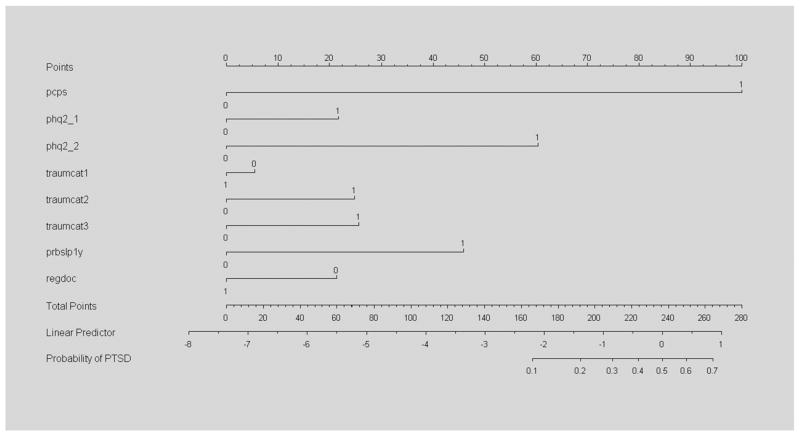Fig. 1.
Nomogram for PCPS with psychosocial predictors included. Fig. 1 shows scale metrics used in score development with the aid of a nomogram, whereby final regression coefficients are converted to additive risk scores relative the PCPS using a linear predictor associated with the probability of the outcome. Note that the variables “regdoc” and “traumcat1” are reversed (i.e., negatively weighted) and the values for each predictor variable in the nomogram correspond to those shown in Table 5 for column B. pcps=Primary Care PTSD Screen; phq2_1=one positive depression symptom on PHQ2 scale; phq2_2=two positive depression symptoms on PHQ2 scale; traumcat1=history of low trauma exposure (one event); traumcat2=history of moderate trauma exposure (two to three events); traumcat3=history of high trauma exposure (four+ events); prbslp1y=difficulty sleeping in past year; regdoc=has regular source of care/doctor. For an example of the use of a nomogram in clinical practice, see Kattan M.W., Wheeler T.M., Scardino P.T. Postoperative nomogram for disease recurrence after radical prostatectomy for prostate cancer. Journal of Clinical Oncology, 1999; 17: 1499–1507.

